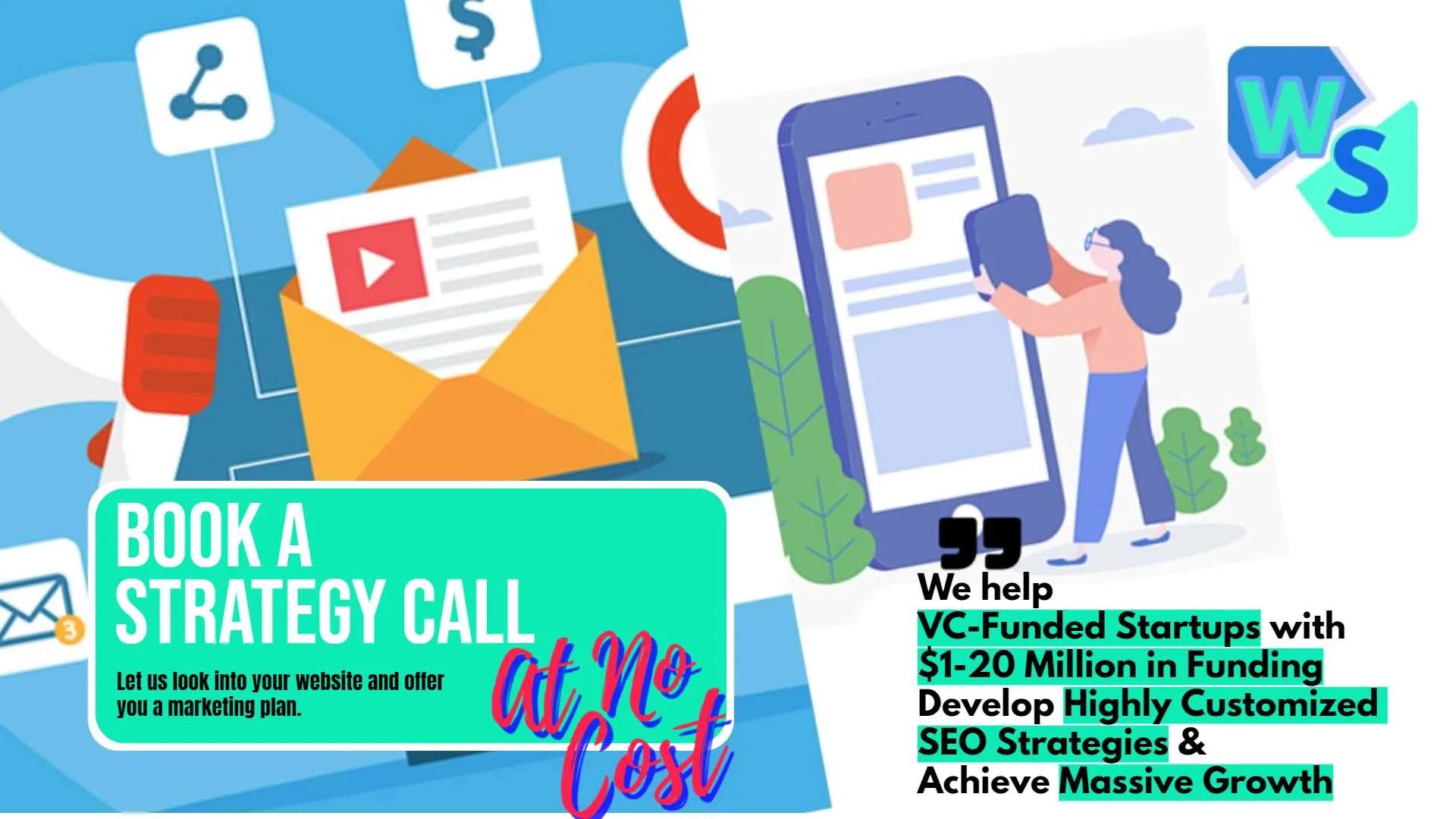Marketing a senior living community requires a thoughtful and empathetic approach. The goal is to create a warm, welcoming environment that appeals to both potential residents and their families. This article will explore effective marketing strategies tailored specifically for senior living communities, helping you attract and engage your target audience.
Understanding Your Audience
Conducting Comprehensive Market Research
To market your senior living community effectively, conducting comprehensive market research is essential. Start by gathering data on the local senior population, including their age, income levels, health status, and living preferences. Use tools like census data, market reports, and surveys to get detailed insights.
Understanding the demographics will help you tailor your marketing strategies to meet the specific needs and preferences of your target audience.
Additionally, look into the cultural and social aspects that might influence their decision-making process. For instance, some seniors might prioritize proximity to family, while others might look for communities with robust health care services.
Engaging with Potential Residents and Families
Direct engagement with potential residents and their families provides invaluable insights into their needs and concerns. Host focus groups and conduct in-depth interviews to understand their expectations and the factors that influence their decisions.
Ask open-ended questions about what they are looking for in a senior living community, their biggest fears and challenges, and what makes them feel comfortable and secure. This qualitative data will give you a deeper understanding of their emotional and practical needs, enabling you to create more personalized and effective marketing messages.
Identifying Influencers in Decision-Making
Recognize that the decision to move into a senior living community often involves multiple influencers, including family members, healthcare providers, and financial advisors. Identify these key influencers and understand their role in the decision-making process.
Develop strategies to reach and engage with them. For example, create educational content that addresses common concerns about senior living and highlights the benefits of your community. Host seminars or webinars specifically for these influencers to showcase your community’s offerings and build trust.
Segmenting Your Audience
Audience segmentation allows you to create tailored marketing campaigns that resonate with different groups within your broader audience. Segment your audience based on factors such as health status, lifestyle preferences, financial situation, and readiness to move.
For instance, active seniors might be more interested in social and recreational activities, while those with health issues might prioritize medical services and safety features. Create personalized messages and offers for each segment to address their unique needs and motivations, thereby increasing the relevance and effectiveness of your marketing efforts.
Utilizing Psychographic Profiling
Beyond demographics, psychographic profiling helps you understand the attitudes, values, and interests of your target audience. Conduct surveys and use data analytics to gather insights into their lifestyle choices, hobbies, and personal values.
For example, if many of your potential residents value fitness and wellness, highlight your community’s fitness programs, healthy meal options, and wellness services. Understanding the psychographics of your audience allows you to connect with them on a deeper level and create marketing messages that resonate emotionally.
Monitoring Online Behavior
Analyze the online behavior of your potential residents and their families to gain insights into their interests and preferences. Use tools like Google Analytics and social media insights to track which pages they visit, how long they stay, and what content they engage with.
This data can help you understand what information they find most valuable and where they might have questions or concerns. Use these insights to refine your website content, blog topics, and social media posts to better meet their needs and provide the information they are seeking.
Gathering and Utilizing Feedback
Regularly gather feedback from current residents and their families to understand what they appreciate most about your community and where there might be room for improvement. Use surveys, suggestion boxes, and regular meetings to collect this feedback.
Analyze the data to identify common themes and insights. Use this information to improve your services and amenities, and highlight these improvements in your marketing materials. Demonstrating that you listen to and act on feedback can enhance your reputation and build trust with potential residents and their families.
Developing Empathy in Marketing
Empathy is crucial when marketing to seniors and their families. Craft your messages to show that you understand their concerns and are committed to providing a supportive and caring environment. Use real stories and testimonials from current residents to illustrate how your community has positively impacted their lives.
Ensure your marketing materials convey warmth, compassion, and a deep understanding of the emotional journey that comes with moving into a senior living community. This empathetic approach helps build a connection with your audience and reassures them that your community is a place where they or their loved ones will be genuinely cared for.
Tailoring Communication Channels
Different segments of your audience may prefer different communication channels. Some seniors might be more comfortable with traditional forms of communication such as phone calls and printed brochures, while others might prefer digital channels like email and social media.
Similarly, family members and caregivers might rely more on digital communications due to their convenience. Ensure that your marketing strategy includes a mix of both traditional and digital channels to reach your audience effectively. Tailor your messaging to suit the medium, making it clear, accessible, and engaging for each type of communication.
Building Trust Through Transparency
Transparency is key to building trust with your audience. Provide clear, detailed information about your services, costs, and the moving process. Avoid any hidden fees or vague descriptions that might cause confusion or mistrust.
Offer virtual tours, detailed floor plans, and comprehensive guides to help potential residents and their families make informed decisions. By being open and honest about what you offer and what they can expect, you build a foundation of trust that is crucial for converting inquiries into residents.
Building a Strong Online Presence

Developing a Comprehensive Digital Strategy
A comprehensive digital strategy is essential for establishing a robust online presence. Begin by clearly defining your goals, such as increasing website traffic, generating leads, or enhancing brand awareness. Identify the digital channels most relevant to your audience, including your website, social media platforms, email marketing, and online advertising.
Create a cohesive plan that outlines how each channel will contribute to your overall objectives. Regularly review and update your strategy based on performance data and emerging trends to ensure it remains effective and aligned with your business goals.
Enhancing Website User Experience (UX)
Your website is often the first point of contact for potential residents and their families. Ensure it offers an exceptional user experience by making it easy to navigate, visually appealing, and mobile-friendly. Use intuitive menus, clear calls to action, and high-quality images to engage visitors.
Incorporate features such as virtual tours, downloadable brochures, and detailed service descriptions to provide valuable information. Regularly test your website on different devices and browsers to ensure it functions smoothly. A well-designed website enhances user satisfaction, increases the time visitors spend on your site, and boosts conversion rates.
Optimizing for Search Engines (SEO)
Search engine optimization (SEO) is crucial for increasing your website’s visibility in search engine results. Conduct thorough keyword research to identify the terms and phrases your target audience is searching for. Integrate these keywords naturally into your website content, meta descriptions, headers, and alt text for images.
Focus on both on-page SEO (such as content quality and keyword optimization) and off-page SEO (such as backlinks from reputable sites). Regularly update your website with fresh, relevant content to improve your search engine rankings. By optimizing your site for SEO, you can attract more organic traffic and generate more leads.
Creating High-Quality Content
Content is king when it comes to building a strong online presence. Develop a content strategy that includes a mix of blog posts, articles, videos, infographics, and downloadable resources.
Focus on topics that are relevant to your audience, such as health and wellness tips, guides to choosing the right senior living community, and updates about community events and activities.
High-quality content not only engages visitors but also establishes your community as an authority in the senior living industry. Regularly publish new content to keep your audience informed and interested.
Leveraging Social Media
Social media platforms are powerful tools for connecting with your audience and showcasing the lifestyle your community offers. Create profiles on platforms where your target audience is active, such as Facebook, Instagram, and LinkedIn.
Share engaging content that highlights resident activities, staff stories, community events, and testimonials. Use a mix of photos, videos, and live streams to keep your content varied and interesting.
Respond promptly to comments and messages to foster a sense of community and build relationships with your followers. A strong social media presence helps you reach a wider audience and generate more inquiries.
Implementing Email Marketing Campaigns
Email marketing is an effective way to stay in touch with potential residents and their families. Build a segmented email list to send targeted messages to different groups within your audience. Develop engaging email campaigns that offer valuable content, such as educational articles, community news, and special offers.
Personalize your emails to make them more relevant and engaging. Use compelling subject lines and clear calls to action to increase open and click-through rates. Regularly analyze the performance of your email campaigns and refine your strategy based on the results to maximize effectiveness.
Utilizing Online Advertising
Online advertising can help increase your visibility and attract more leads. Use platforms like Google Ads and social media advertising to run targeted campaigns that reach your desired audience. Develop ad copy and visuals that highlight the unique features and benefits of your senior living community.
Create landing pages that match the intent of your ads and provide a clear path to conversion. Monitor the performance of your ads closely and adjust your targeting, budget, and creative elements to optimize results. Online advertising can drive immediate traffic and generate high-quality leads for your community.
Building and Managing Online Reviews
Online reviews play a crucial role in influencing the decisions of potential residents and their families. Encourage satisfied residents and their families to leave reviews on platforms like Google, Yelp, and Facebook. Make it easy for them by providing direct links and clear instructions.
Monitor and respond to reviews promptly, thanking those who leave positive feedback and addressing any concerns raised in negative reviews. Highlight positive reviews on your website and social media profiles to build credibility and trust. Managing your online reputation effectively can enhance your community’s image and attract more inquiries.
Engaging with Your Online Community
Active engagement with your online community can strengthen your brand and foster loyalty. Create opportunities for interaction by hosting online events, such as webinars, Q&A sessions, and virtual tours. Encourage your followers to share their experiences and feedback through comments and social media posts.
Show appreciation for your community by highlighting their stories and contributions. Regular engagement helps build a sense of belonging and keeps your audience connected to your community.
Monitoring and Analyzing Performance
Regularly monitoring and analyzing the performance of your online presence is essential for continuous improvement. Use analytics tools to track key metrics such as website traffic, social media engagement, email open rates, and ad performance.
Identify trends and insights to understand what is working and what needs improvement. Use this data to refine your digital strategy, optimize your content, and enhance your user experience. Continuous analysis and adjustment ensure that your online presence remains effective and aligned with your business goals.
Leveraging Social Media Platforms
Developing a Comprehensive Social Media Strategy
To effectively leverage social media platforms, begin by developing a comprehensive strategy that aligns with your senior living community’s goals. Start by identifying which social media platforms your target audience is most active on.
Platforms like Facebook and Instagram are particularly popular among older adults and their families. Define clear objectives for your social media efforts, such as increasing brand awareness, driving website traffic, or generating leads. Develop a content calendar to plan and schedule your posts in advance, ensuring consistency and variety in your content.
Creating Authentic and Engaging Content
Content authenticity is key to building trust and engagement on social media. Share real stories and experiences from your community. Feature resident testimonials, staff highlights, and behind-the-scenes looks at daily life in your community.
Use high-quality photos and videos to capture genuine moments of joy, interaction, and care. Authentic content resonates more deeply with your audience and showcases the vibrant, supportive environment your community offers.
Utilizing Live Streaming and Virtual Events
Live streaming and virtual events are powerful tools for engaging with your audience in real-time. Use Facebook Live or Instagram Live to host Q&A sessions, virtual tours, and community events. Promote these live sessions in advance to maximize attendance.
During the live stream, interact with viewers by answering questions and responding to comments. This real-time interaction helps build a stronger connection with your audience and provides a transparent view of your community.

Running Targeted Ad Campaigns
Social media advertising allows you to reach a highly targeted audience with your marketing messages. Use the advanced targeting options available on platforms like Facebook Ads to reach specific demographics, interests, and behaviors. For example, target ads to adult children who may be looking for senior living options for their parents. Create compelling ad copy and visuals that highlight the unique benefits of your community.
Use clear calls to action, such as “Schedule a Tour” or “Learn More,” to drive engagement and inquiries. Regularly monitor and optimize your ad campaigns based on performance data to ensure maximum effectiveness.
Engaging with Your Audience
Active engagement with your social media audience helps build a sense of community and fosters loyalty. Respond to comments, messages, and reviews promptly and thoughtfully. Encourage conversations by asking questions and inviting followers to share their experiences and thoughts.
Highlight user-generated content by sharing posts from residents and their families who tag your community. Engaging with your audience shows that you value their input and are committed to building relationships.
Collaborating with Influencers
Partnering with influencers who resonate with your target audience can amplify your reach and credibility. Identify local influencers, bloggers, or healthcare professionals who have a strong following among seniors and their families.
Collaborate on content that highlights your community’s offerings and values. This could include sponsored posts, guest appearances on live sessions, or joint events. Ensure that the influencer’s values align with your community’s mission to maintain authenticity and trust.
Utilizing Social Proof
Social proof is a powerful tool for building trust and credibility. Share testimonials, reviews, and success stories from residents and their families on your social media platforms. Highlight positive feedback and showcase the positive impact your community has on the lives of its residents.
Use quotes, video testimonials, and stories to illustrate these experiences. Social proof reassures potential residents and their families that your community is a trusted and caring place.
Monitoring Trends and Adapting Strategies
Social media trends evolve rapidly, and staying updated is crucial for maintaining an effective presence. Follow industry blogs, attend webinars, and participate in social media marketing forums to stay informed about new features, tools, and best practices.
Experiment with emerging trends, such as new content formats or interactive features, to keep your social media presence fresh and engaging. Regularly review and adjust your social media strategy based on performance data and audience feedback to ensure it remains effective and aligned with your goals.
Measuring and Analyzing Performance
Regularly measuring and analyzing the performance of your social media efforts is essential for continuous improvement. Use analytics tools provided by social media platforms to track key metrics such as engagement rates, follower growth, click-through rates, and conversions.
Identify patterns and insights to understand what content resonates most with your audience and which strategies drive the best results. Use this data to refine your content, posting schedule, and advertising efforts. Continuous analysis and optimization ensure that your social media strategy remains effective and contributes to your overall marketing goals.
Implementing Email Marketing Campaigns
Building a Segmented Email List
To maximize the effectiveness of your email marketing campaigns, build a segmented email list. Segmentation allows you to tailor your messages to different groups within your audience based on their specific needs and interests. Start by categorizing your contacts into segments such as potential residents, family members, healthcare professionals, and real estate agents.
Use data from your website sign-ups, social media channels, and offline interactions to enrich your list. A well-segmented email list ensures that each group receives content that is relevant and valuable to them, increasing engagement and conversion rates.
Personalizing Email Campaigns
Personalization goes beyond using the recipient’s name in the email. Use the data you have collected to create highly personalized and relevant email content. For instance, send potential residents information about your community’s amenities and lifestyle offerings, while providing family members with content that addresses their concerns about safety and care.
Include personalized recommendations based on previous interactions and preferences. Personalization makes your emails more engaging and helps build a stronger connection with your audience, increasing the likelihood of them taking action.
Crafting Compelling Email Content
The content of your emails should be engaging, informative, and action-oriented. Start with a captivating subject line that grabs the recipient’s attention and encourages them to open the email. Use a conversational tone and clear, concise language to make your content easy to read.
Highlight the key benefits and unique features of your senior living community. Include stories and testimonials from current residents to build trust and credibility. Use high-quality images and videos to make your emails visually appealing. Ensure that each email includes a clear call to action, such as scheduling a tour or contacting your team for more information.
Automating Email Workflows
Email automation allows you to send timely and relevant messages based on specific triggers and actions. Set up automated workflows for different stages of the customer journey. For example, create a welcome series for new subscribers that introduces them to your community, highlights key features, and offers a special incentive to schedule a visit.
Implement follow-up emails for those who have shown interest but haven’t taken the next step, such as downloading a brochure or attending an open house. Automation ensures consistent communication and helps nurture leads effectively, moving them closer to making a decision.
Integrating Email Campaigns with Other Marketing Channels
Integrating your email marketing campaigns with other marketing channels creates a cohesive and unified brand experience. Use your emails to drive traffic to your website, blog, and social media profiles. Promote your email newsletter on your social media channels and include sign-up forms on your website to grow your subscriber list.
Cross-promote your email content with other marketing efforts, such as online advertising and content marketing, to maximize reach and engagement. Integration ensures that your marketing efforts are coordinated and reinforce each other, amplifying their overall impact.
Measuring Email Campaign Performance

Regularly measuring the performance of your email campaigns is crucial for continuous improvement. Track key metrics such as open rates, click-through rates, conversion rates, and unsubscribe rates. Use A/B testing to compare different subject lines, email content, and calls to action to see what resonates best with your audience.
Analyze the data to identify trends and insights, such as which types of content generate the most engagement or which segments of your audience are most responsive. Use these insights to refine your email marketing strategy, optimize your content, and improve future campaigns.
Providing Valuable Resources
One of the best ways to engage your email subscribers is by providing valuable resources that address their needs and concerns. Offer downloadable guides, checklists, and eBooks that provide helpful information about senior living, such as tips for choosing the right community or understanding the benefits of different types of care.
Include links to blog posts, videos, and webinars that offer additional insights and advice. By consistently providing valuable content, you position your community as a trusted resource and keep your audience engaged and interested.
Encouraging Feedback and Interaction
Encouraging feedback and interaction through your email campaigns can help build stronger relationships with your audience. Include surveys and polls in your emails to gather feedback on their interests, preferences, and concerns. Ask open-ended questions that invite them to share their thoughts and experiences.
Respond to their feedback promptly and thoughtfully, showing that you value their input and are committed to continuous improvement. Interaction fosters a sense of community and engagement, making your audience feel more connected to your brand.
Segmenting by Engagement Level
Segmenting your email list by engagement level allows you to tailor your messages based on how active and interested your subscribers are. Identify highly engaged subscribers who frequently open and click your emails, and send them exclusive offers, early access to events, and personalized recommendations.
For less engaged subscribers, create re-engagement campaigns that offer incentives to take action, such as special discounts or compelling content that addresses their specific needs. Segmenting by engagement level helps you deliver more relevant content and improve overall campaign performance.
Ensuring Compliance and Privacy
Compliance with email marketing regulations is essential for building trust with your audience and avoiding legal issues. Ensure that your email campaigns comply with laws such as the CAN-SPAM Act, GDPR, and other relevant regulations.
Obtain explicit consent from subscribers before adding them to your email list, and provide clear and easy ways for them to unsubscribe. Include your business name, address, and a clear explanation of why recipients are receiving your emails. Transparency and respect for privacy build trust with your audience and contribute to a positive brand image.
Conclusion
Marketing strategies for senior living communities require a thoughtful, multi-faceted approach that connects with potential residents and their families on a deep level. By understanding your audience, building a strong online presence, leveraging social media platforms, and implementing strategic email marketing campaigns, you can create a compelling and engaging brand image.
Tailoring your marketing efforts to address the specific needs and concerns of seniors and their families, using authentic and high-quality content, and fostering a sense of community and trust will help you stand out in a competitive market. Continuously measuring and refining your strategies based on performance data ensures that your efforts remain effective and aligned with your goals.
Read Next:
- How to Design Effective Marketing Postcards
- Celebrate Your Business Anniversary with These Marketing Ideas
- Creative Name Ideas for Your Marketing Company
- Autumn Marketing Strategies for Real Estate Professionals
- Innovative Marketing Ideas to Transform Your Business






















Comments are closed.